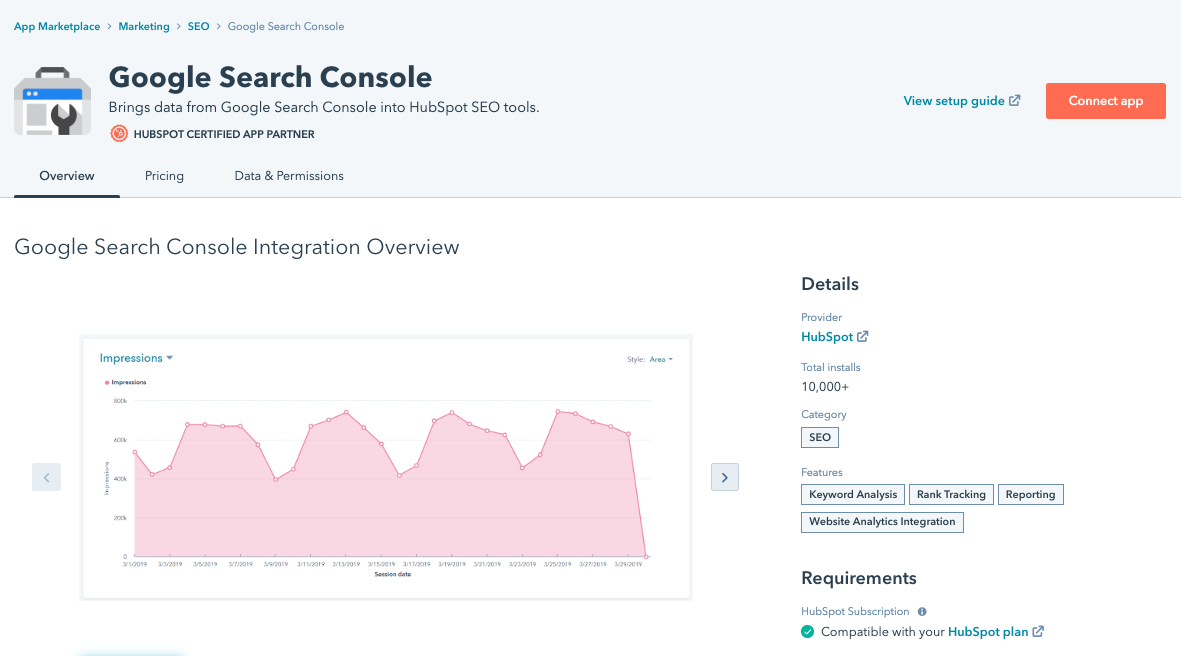Subscribe now and get the latest podcast releases delivered straight to your inbox.
RIP HubSpot's 'links' tool: What you should use instead

Jan 8, 2020

HubSpot recently announced that the 'links' tool is going away on January 10, 2020.
Now, you may be wondering, why would a company founded on "inbound" eliminate a tool that helps you track inbound links to your website?
The truth is that this is less of an “elimination” and more of a “moving on to greener pastures” situation.
HubSpot’s official statement said that “the tool [had] relatively low usage,” and as a result, the company “decided to remove links so we can focus on tools that provide more value to our customers.”
But close HubSpot observes had recognized that the company had neglected to update the links tool for quite some time, and had regulated the tool’s placement to the bottom of the Analytics Tools section.
The links tool relied on data recorded from Moz and was originally designed to help track domains that link to your website, while also providing a high-level overview of the links to your competitors.
But marketers weren’t looking for a “high-level” overview — they wanted to dive into the nitty-gritty details.
As a result, HubSpot has made a concerted effort to double down on its custom reporting capabilities and to harness the power of its proprietary data. This not only allows users to glean valuable insight into their marketing ROI, but it also reduces HubSpot’s reliance on third-party data providers.
Does this mean you should disregard link building in your inbound marketing strategy? Absolutely not.
When I asked Carina Duffy, director of HubSpot training at IMPACT, what she thought about HubSpot’s decision to retire the links tool, she basically said that there are plenty of other fish in the sea:
“While tracking inbound links is certainly an important part of tracking your inbound efforts (and something you can easily do in other free tools like Google Search Console), HubSpot gives you a host of other tools to help you know how you’re doing. A few of my favorites are Traffic Analytics, Campaign Analytics, and Custom Reporting.”
So while you may miss the convenience of having the links tool located within your HubSpot Reporting Tab, don’t abandon link building as a solid SEO approach.
Why should you track inbound links to your website?
The inbound marketing methodology was built on the concept of attracting visitors to your website with wildly engaging content.
A solid link building strategy can help you amplify the reach of your content and drive additional traffic to your website. And a solid link building strategy starts with acquiring high-quality backlinks, which, according to Searchmetrics, “are links from outside domains that point to pages on your domain.” Backlinking can be accomplished in two (overly simplified) steps:
- Step 1: You or your team produce a killer piece of content.
- Step 2: Another website decides to reference that relevant piece of content with their visitors by linking to it on their domain — creating a backlink.
While many factors go into the overall strength of your website’s backlinking profile, generating strong and relevant connections between your site and top-level or “trusted” domains is the best way to up your SEO game.
So, even if the HubSpot Links tool is gone, link building should still be a major part of your SEO strategy in 2020.
Enter Google Search Console
So where do you turn for quality link building resources after January 10th? Google Search Console.
Google Search Console integrates directly with HubSpot, and allows you to bring data from Google searches into your HubSpot portal.

Dan Baum, IMPACT’s paid media specialist, says:
“Google Search Console allows you to get your information directly from the horse’s mouth — without relying on tracking codes or scripts that can sometimes fail. Accessing live data that shows how your webpages are ranking and what search queries led people to click through to your site. This gives you a ton of insight into what your web visitors care about most."
With the Google Search Console integration, HubSpot allows you to continue tracking the success of your inbound link building.
Not only does the power of the links tool live on, but you can now access Google Search Console information in new ways within your HubSpot portal — from the optimization panel of each page or blog post to the SEO dashboard in the Planning and Strategy section.
The bottom line on link building
We can only speculate as to why HubSpot is retiring its links tool.
Maybe the links tool is actually being underutilized by clients. Or maybe HubSpot wants to play to its strengths and focus on reporting that utilizes proprietary data.
Regardless of the driving factors behind this decision, this shift is not a knock against link building as an SEO strategy.
No one wants to yell (or write) into the void... so create killer content, and then use the marketing tools at your disposal to build those backlinks!
Free Assessment: